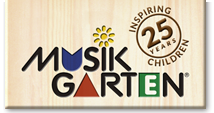With so many things needing attention at once, it is all too easy for owners of children’s music studios to lose focus on basic marketing principles that will help them ensure the ongoing success of their business. We often unintentionally get bogged down in the day to day activities, where more long-term plans are placed by the wayside. As a refresher, these five very basic marketing steps should be periodically addressed in order to help operators of childhood music programs stay on track and prevent “missing the forest from the trees.”
Step 1 – Setting SMART Marketing Goals
Goal Setting is the first important and crucial step in the marketing strategy process. We have explored in the past how to develop SMART goals and achieve them, because if you don’t know where you want to be, how can you plan to get there? Traditionally, goal setting for businesses was recommended at one- and five-year intervals. However, depending on changes in your business environment (such as the Covid pandemic), you will want to review and adjust your goals as needed.
Step 2 – Determine or Realize Your Target Market
A target market is the particular group of consumers at which your children’s music program is aimed. For example, your overall target market may be families with young children. Market segmentation further divides the larger market into smaller, more defined categories, such as parents or grandparents of young children. Even further, you can divide them into demographic, geographic, psychographic, and behavioral segmentation. The more specific the segments, the better you can focus your marketing resources. If you don’t know where to start, a good place is your current customer base. What are their similarities in those four segment categories? Once you have determined your current customer, you can expand marketing efforts from there to similar audiences.
Step 3 – Developing a Marketing Message
“You can lead a horse to water, but you can’t make them drink.” No matter how well you have identified your target market and segments, if you do not offer value to them through your music studio offerings, they will not enroll their child. Therefore, you must determine your value proposition or “pitch” in order to explain why they should enroll their child in your program. As a professional children’s music teacher, you are well aware of the numerous benefits that early childhood music education to children. The key is to create a concise statement or series of statements of this value called a Marketing Message. This is your “elevator speech” that should be consistent in all of your marketing and sales efforts and only slightly tweaked for different market segments.
Step 4 – The Competitive Positioning Statement
As with any business, it’s important to understand your competition. This may be indirect competitors that don’t offer the exact same product or service but yet compete for your target market’s resources. For example, children’s dance classes or sports programs that also enrich the lives of children may compete for your parent’s budget or time. It’s also important to know your direct competitors – other early childhood music programs. Think about how you can market or sell against both types of competitors, which is often summarized in a competitive positioning statement. This is generally stated more in positive terms of the different benefits your business offers than negative terms such as “throwing shade” on your competitors. As with the marketing message, indirect and direct positioning statements will be slightly different.
Step 5 – The Marketing Mashup – How it All Comes Together
The final basic step in the marketing strategy process is to combine all the previous steps. In a nutshell, it is to present your unique value proposition to your target audience(s) in order to reach your marketing goals. A unique value proposition is how you combine your marketing message with your competitive positioning statement in order to differentiate your children’s music studio from its competition. Depending on the goals you have set and your marketing budget, you can determine the best way to reach your target audiences through the various marketing channels available. Remember that the more specific you are with your target market segments, the more efficient you will be with your marketing resources – whether in time or money.
While there are many other decisions to be made about implementing your marketing plan through sales and marketing channels, if you begin with these basic steps and refer back to them consistently, you will have a good marketing foundation for your early childhood music studio. Keep in mind, however, that marketing is both an inexact science as well as an iterative process. Fully expect that you will make mistakes along the way, but with a good marketing strategy, they will have less of a negative impact and make you that much smarter the next time around.





